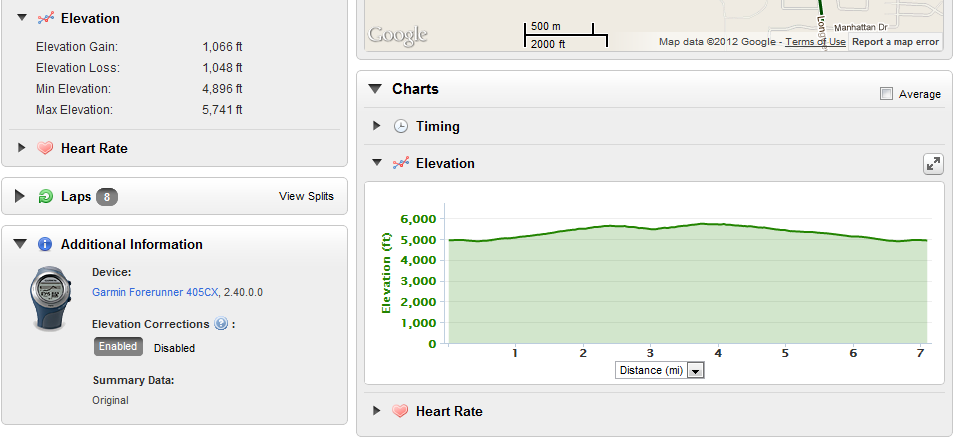I recently started putting my run data on RunningAhead.com. I really like the site and the ability to graph multiple elements simultaneously on a single graph. I also like that it reads the data from my Garmin Forerunner 405CX wirelessly, too. That makes data upload easy. The only thing Garmin has on their site that I still occasionally look at is goal-progress. I imagine RA can implement that one pretty easily too, and eliminate any need for me to deal with Garmin.
When I uploaded some of my data, I noticed that, yet again, the elevation profile information was different from everyone else's. As part of a different conversation with Eric Yee from RunningAhead, I asked about why there were differences in elevation profiles for different sites. This is part of his response:
As you said in your blog, the points are expressed as a series of lat lng points. Since the elevation sampling is in a grid, most of the points do not fall directly on the sampling point so some interpolation is needed. This where where the difference between difference sites come from because each site will have a different interpolation algorithm. Sites such as RA and Garmin tend to have reproducible elevation profiles (within each site) because all the servers use the same algorithm.
Google is different. The reason you get a different profile depending on the computer you're using is that Google does a lot of things behind the scenes. Depending on a bunch of factors such as your computer's geographic location, OS, and who knows what else, your request will be load balanced differently. To make it more complicated, Google also do A/B test with their users so what you see will be different from what someone else is seeing. Depending on which server is handling your request, it may have a different algorithm because it takes time for the software to be deployed across Google's network. "
At any rate, have a great weekend. My loin-fruit are free of school as of this afternoon, so they'll be as happy as I am tomorrow: they get to sleep in, and I get to go for a run before the big 13th birthday party for my son. O_O






 RSS Feed
RSS Feed